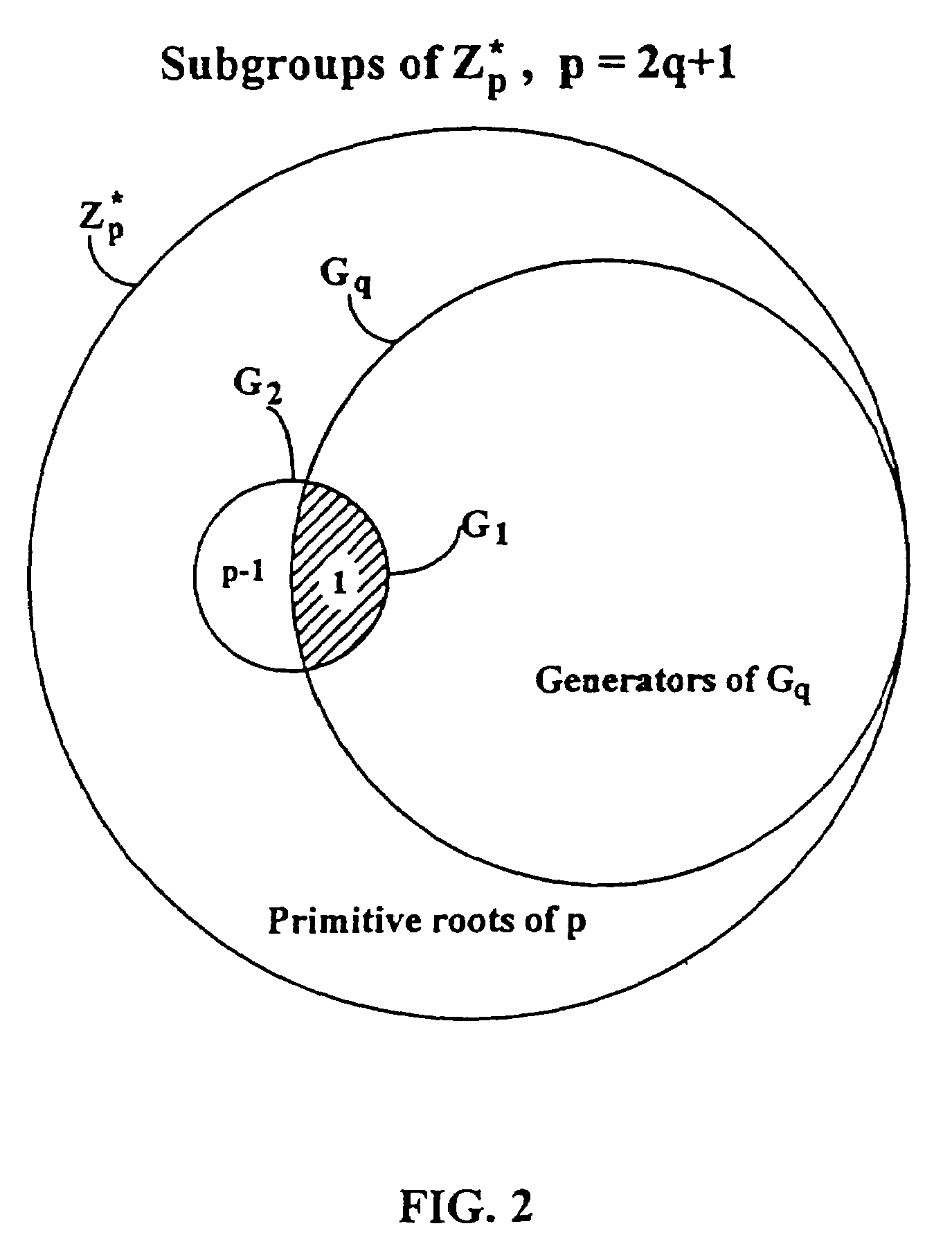Cryptographic methods for remote authentication
a remote authentication and cryptography technology, applied in the field of cryptography communication, can solve problems such as banking atm machines thwarting attacks, many passwords are small, and traditional password-based network authentication systems have weaknesses
- Summary
- Abstract
- Description
- Claims
- Application Information
AI Technical Summary
Benefits of technology
Problems solved by technology
Method used
Image
Examples
Embodiment Construction
[0054]3. Description of SPEKE
[0055]We now describe a simple password-authenticated exponential key exchange (SPEKE). This method can generally serve as a replacement for any other minimal-disclosure method. We first describe SPEKE in terms of a commutative family of keyed mapping functions. We will show at least two public-key distribution systems that work with SPEKE, and provide details for an embodiment where the family of mapping functions uses exponentiation in a subgroup of Zp*. We also further describe the required constraints that make the method safe.
[0056]3.1. General Form of SPEKE
[0057]In this method, two parties, Alice and Bob alone share knowledge of a secret password S. Bob proves his identity to Alice by proving his knowledge of the result of a key exchange protocol, which is determined by parameters set according to a function of S. Alice and Bob protect access to S from untrusted parties. We will explore the factors in the choice of these parameter-determination fun...
PUM
 Login to View More
Login to View More Abstract
Description
Claims
Application Information
 Login to View More
Login to View More - R&D
- Intellectual Property
- Life Sciences
- Materials
- Tech Scout
- Unparalleled Data Quality
- Higher Quality Content
- 60% Fewer Hallucinations
Browse by: Latest US Patents, China's latest patents, Technical Efficacy Thesaurus, Application Domain, Technology Topic, Popular Technical Reports.
© 2025 PatSnap. All rights reserved.Legal|Privacy policy|Modern Slavery Act Transparency Statement|Sitemap|About US| Contact US: help@patsnap.com



